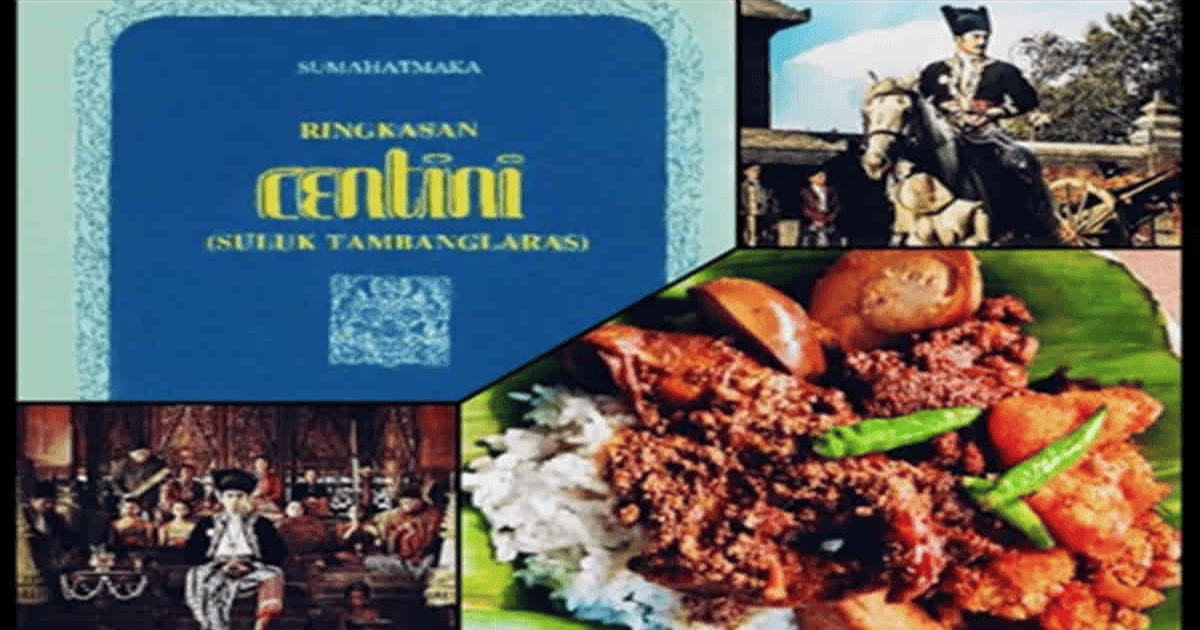Yogyakarta. The history of gudeg, a traditional dish synonymous with Yogyakarta. Yogyakarta is a special region steeped in diverse cultural traditions and stories.
Some people in Indonesia know Jogja as a city with various names, starting from Student City , Cultural City, Hero City, and Gudeg City .
The last term is the most familiar adage . Jogja, known as the City of Gudeg, has become a promotional slogan for a tourist city rich in culinary heritage.
Gudeg, a jackfruit-based dish from Yogyakarta, is an interesting story to explore. How did Yogyakarta become known as the City of Gudeg if no one named it? So, who actually coined this name?
One answer to this question is that Yogyakarta became a tourist destination in the 1950s. However, according to history, gudeg existed long before 1950 and became a popular specialty among the people of Yogyakarta.
Gudeg has been around since the glory days of Ancient Mataram through to Islamic Mataram. This delicious dish, served on a banana leaf, is a staple snack that transcends caste.
Because gudeg is always popular, this dish is also known for its indiscriminate taste . Anyone can try it, not just royalty but also commoners.
Because the existence of gudeg makes Jogja famous in various countries as a legendary culinary tourism city, in 2018 ASEAN awarded Jogja the title of ASEAN City of Culture.
The History of Gudeg Has Existed in Jogja Since the Glory of Mataram
According to Primastuti Nur Malinda in a note entitled, “Gudeg: Between Identity and Commodity” (2021), gudeg is a traditional food made from jackfruit and has a sweet taste typical of the Jogja tongue .
Although the history of the birth of gudeg food in Jogja is not yet clear, it is said that some historians believe that gudeg has existed as a special snack in the land of Sultan Agung since the golden age of Mataram.
This is evident in several Mataram heritage sites that mention gudeg as a daily staple of the Yogyakartan people. For example, in the ancient manuscript Serat Centhini , the name gudeg is mentioned four times. First, in canto 157 ( Dhandhanggula ), both 16-20.
According to the Serat Centhini manuscript , gudeg is a food that comes from rice sellers at wayang performances.
Its customers were commoners and lacked feudal prestige. However, its rich flavor suited the palates of the palace, making gudeg a popular specialty during the glory days of Mataram.
Food of Mataram Officials
Historically, Mataram officials claimed gudeg was a special dish for royal guests. However, gudeg actually originated among the common people, not the royals. Despite this, feudal officials insisted on Mataram’s gudeg.
This is evident in verses 40-44 of Dhandhanggula 234. This verse mentions that when Mas Cebolang and his four students stopped and rested at Prince Tembayat’s house, Tembayat’s incarnation family served a variety of food on the table, including gudeg .
Besides feeling that gudeg is a new dish on the Mataram table, they also indicate that gudeg’s quality as a luxurious culinary dish can be seen from the way it is served.
Mataram servants cook and serve gudeg with care. They even serve it on special plates, tables, spoons, and coasters .
Gudeg is always served early in the morning. People enjoy eating gudeg for breakfast; its sweet taste and soft jackfruit texture can improve digestion. It’s said that eating gudeg for breakfast won’t cause stomach upset, even in the early hours of the morning .
There are two types of gudeg favored by Mataram officials: Gudeg Manggar and Gudeg Sambel Batos . These two types of gudeg would be served by palace servants to special guests who were paying tribute.
However, history records that, because of their different tongues , Mataram’s European guests did not really like the special dish, namely gudeg.
Gudeg Culinary Becomes a Cultural Identity in Jogja
Although gudeg has been around since the glory days of Mataram, it seems this culinary specialty of those who love the sweet taste should be considered fortunate. Because of gudeg, Yogyakarta has a special value , a gudeg that can become a cultural identity.
Gudeg has made Yogyakarta a Culinary-Friendly Cultural City . This means the city is a popular destination for tourists seeking regional culinary delights.
Gudeg is the main target for lovers of sweet and savory culinary delights when they visit Jogja .
Gudeg has become a popular dish, enjoyed not only by locals but also by some international visitors. They are impressed by its sweet, savory, yet delicious flavor .
Yogyakarta’s gudeg is so famous that a native of Yogyakarta even ventured into opening a gudeg stall in Bandung. This story is as reported in the newspaper Algemeen Indisch Dagblad de Preangerbode in 1950.
The newspaper featured an advertisement for a legendary gudeg stall on Jalan Wastukencana, Bandung, West Java. This Jogja specialty, in fact, was the first gudeg vendor in West Java.


Comments